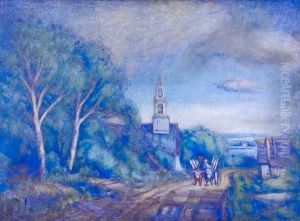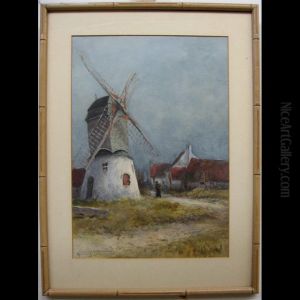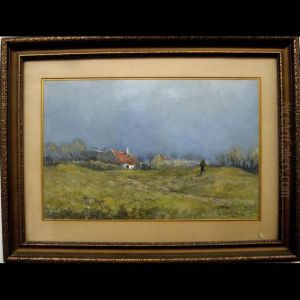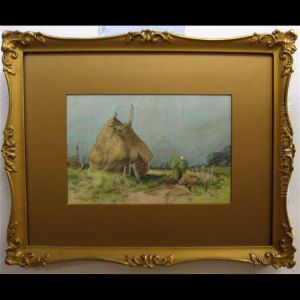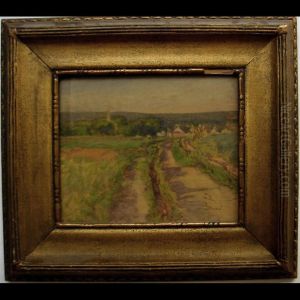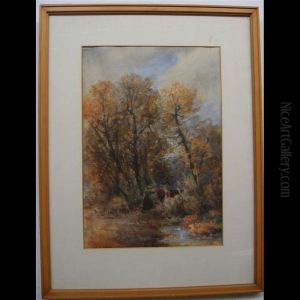George Chauvignaud Paintings
George Chauvignaud was a Canadian artist known for his contributions to the landscape painting genre, particularly within the context of early 20th-century Canadian art. Born in 1865 in Toronto, Ontario, Chauvignaud was part of a generation of artists who sought to capture the unique essence and beauty of the Canadian landscape, a theme that was gaining popularity as national identity became a significant cultural focus in Canada during his lifetime.
Chauvignaud's artistic journey began in his youth, showing an early talent for drawing and painting. However, detailed information about his early education and training is sparse, which is not uncommon for artists of his era. What is known is that he developed a style that was influenced by both European traditions and the emerging distinctively Canadian approach to landscape art. This was a period when Canadian artists were beginning to break away from the European academic styles to embrace and depict the ruggedness and diversity of the Canadian landscape.
Throughout his career, Chauvignaud exhibited a profound connection to the natural world, often venturing into the wilderness to capture scenes of Ontario, Quebec, and the Maritimes. His work is characterized by a keen observation of light and atmosphere, with a particular interest in depicting the changing seasons and the various moods of the Canadian landscape. His paintings often featured dense forests, serene lakes, and expansive skies, reflecting a deep appreciation for the untouched wilderness.
Despite his talent and contributions to Canadian art, George Chauvignaud did not gain the same level of fame as some of his contemporaries, such as the Group of Seven, who would come to dominate the Canadian art scene in the years following his active period. Nonetheless, his work was appreciated by those who knew it, and he participated in several exhibitions throughout his career.
Chauvignaud's life and work remain a subject of interest for those studying the development of landscape painting in Canada and the broader narrative of Canadian cultural history. He passed away in 1944, leaving behind a body of work that continues to be appreciated for its beauty and historical significance. His paintings are included in various Canadian art collections, serving as a testament to his enduring contribution to the country's artistic heritage.
